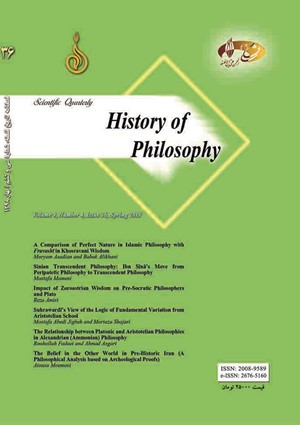-
-
List of Articles
-
Open Access Article
1 - Suhrawardī’s View of the Logic; A Fundamental Variation from Aristotelian School
mostafa abedi jige -
Open Access Article
2 - Editor's Notes
Hossein Kalbasi Ashtari -
Open Access Article
3 - A Comparison of Perfect Nature in Islamic Philosophy with Fravashī in Khosravani Wisdom
Maryam Asadian Babak Alikhani Alikhani -
Open Access Article
4 - Sinian Transcendent Philosophy: Ibn Sīnā’s Move from Peripatetic Philosophy to Transcendent Philosophy
Mostafa Momeni -
Open Access Article
5 - Impact of Zoroastrian Wisdom on Pre-Socratic Philosophers and Plato
Reza Amiri -
Open Access Article
6 - The Relationship between Platonic and Aristotelian Philosophies in Alexandrian (Ammonian) Philosophy
Roohollah Fadaei Ahmad Asgari -
Open Access Article
7 - The Belief in the Other World in Pre-Historic Iran (A Philosophical Analysis based on Archeological Proofs)
Atousa Moemeni
-
The rights to this website are owned by the Raimag Press Management System.
Copyright © 2017-2025







